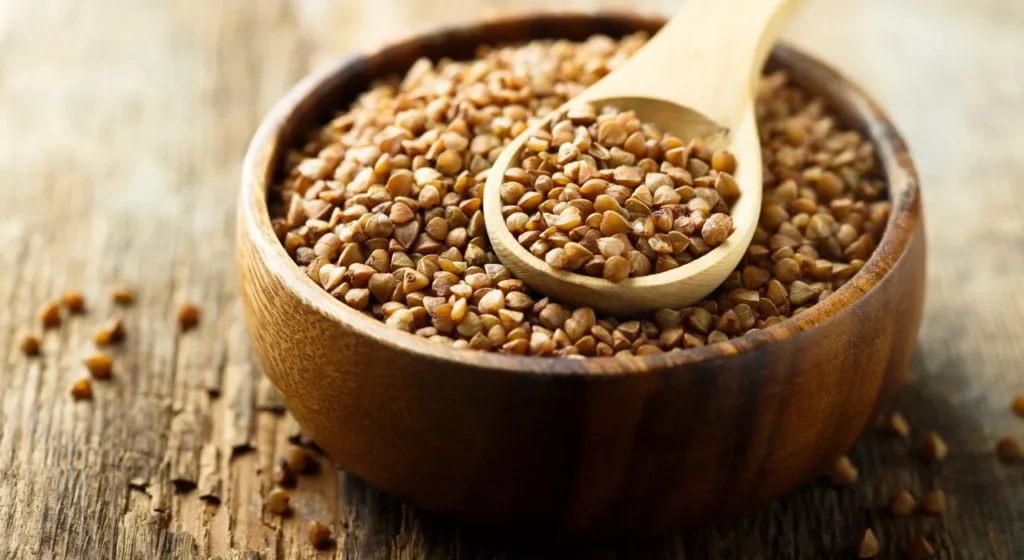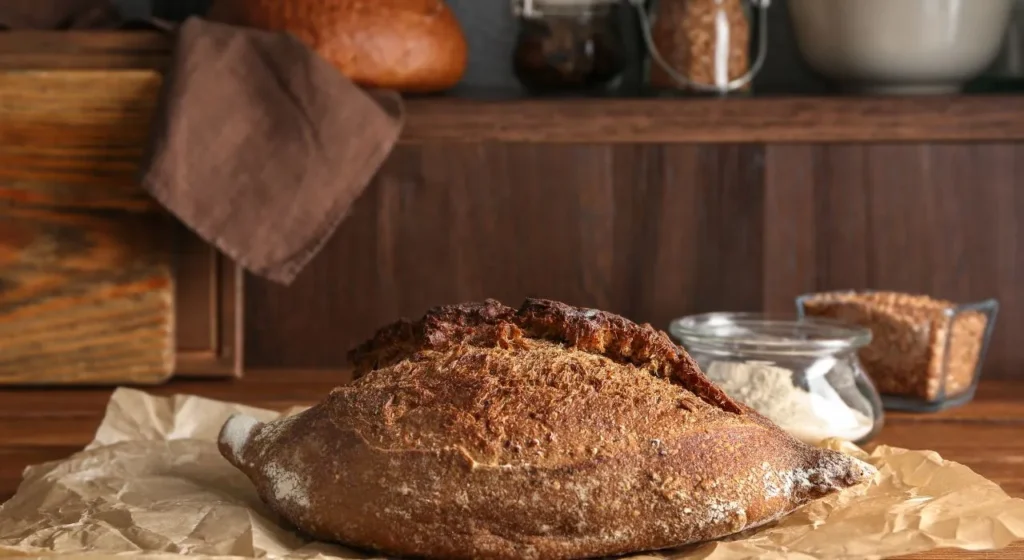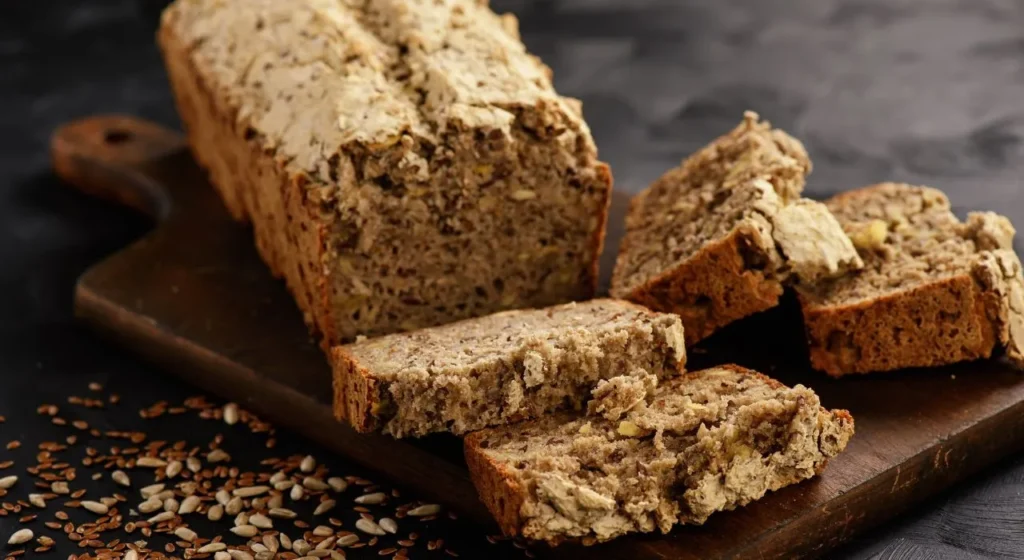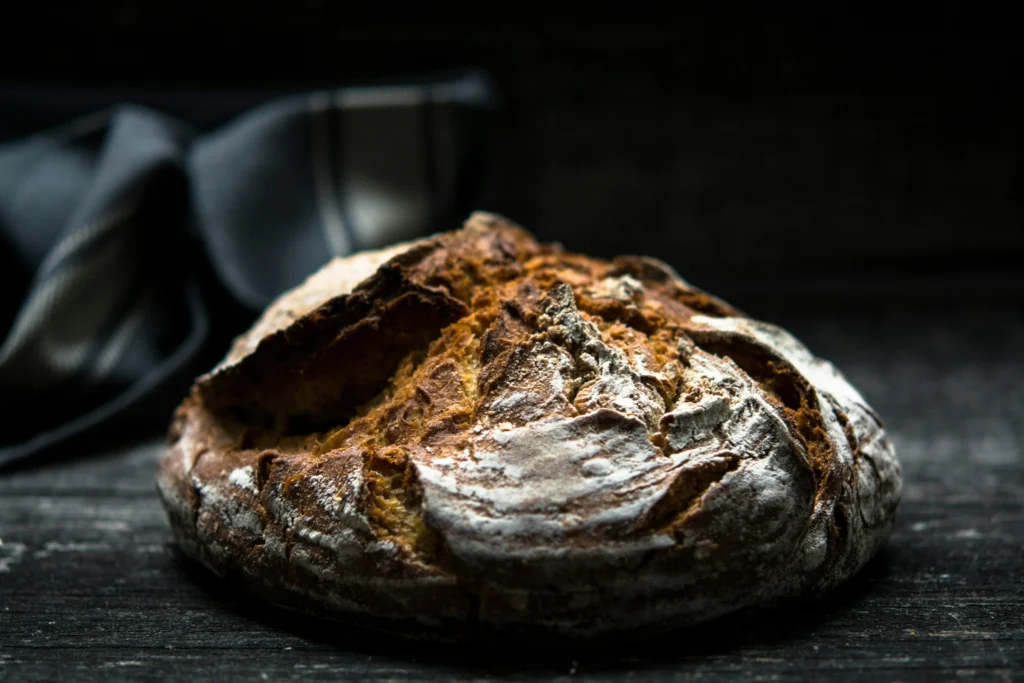Introduction to Buckwheat Bread
Buckwheat bread is gaining popularity, especially among health-conscious individuals. This unique loaf, made from buckwheat flour, boasts a nutty flavor and impressive nutritional profile. Unlike traditional wheat-based options, this bread is naturally gluten-free, making it perfect for those with gluten sensitivities or celiac disease.
In this blog post, you’ll learn everything about buckwheat bread, from its rich history to a detailed recipe you can easily follow at home. We’ll also explore the numerous health benefits of incorporating this delicious bread into your diet. Whether you are looking for a healthy alternative or simply curious about this versatile ingredient, read on to discover why it should be a staple in your kitchen.
The History of Buckwheat Bread
Ancient Origins of Buckwheat
Despite its name, buckwheat isn’t related to wheat. Instead, it comes from a plant related to rhubarb. Originating in Southeast Asia, farmers have cultivated buckwheat for thousands of years. It spread to Europe and Russia, where people valued it for its ability to grow in poor soil and harsh climates. Its resilience made it a crucial crop in regions with challenging growing conditions.
Traditional Uses in Bread Making
Various cultures have used buckwheat in making bread and other baked goods. In Europe, particularly in Russia and France, bakers have relied on buckwheat flour for traditional recipes. Russian blinis and French galettes are famous examples of buckwheat-based foods enjoyed for centuries. These recipes highlight the versatility of buckwheat flour and its integral role in regional cuisines.
Cultural Importance Around the World
Buckwheat holds cultural significance in several regions. In Japan, soba noodles made from buckwheat are a dietary staple. In India, people use buckwheat during fasting periods due to its non-cereal status. The adaptability and nutritional benefits of buckwheat have cemented its place in various culinary traditions around the world. Additionally, in the United States, buckwheat pancakes, known as “buckwheat cakes,” have been a traditional favorite, particularly in the Appalachian region.

What You Need
Before you begin making buckwheat bread, it’s important to gather all the necessary tools and ingredients. Having everything ready will make the process smoother and more enjoyable.
Kitchen Tools and Equipment
To make homemade buckwheat bread, you will need the following kitchen tools and equipment:
- Mixing Bowls: You’ll need one large bowl for the dry ingredients and one medium bowl for the wet ingredients.
- Measuring Spoons and Cups: Accurate measurements are essential for baking success.
- Whisk or Spoon: For mixing the ingredients together.
- Loaf Pan: A standard 9×5-inch loaf pan works well for this recipe.
- Parchment Paper (Optional): Consider lining the loaf pan for easier removal of the bread.
- Cooling Rack: Used to cool the bread once it’s baked.
- Oven: Preheating the oven is a key step in ensuring your bread bakes evenly.
Ingredients for Buckwheat Bread
Now, let’s look at the ingredients you will need. This recipe uses simple, wholesome ingredients that you may already have in your pantry.
Dry Ingredients:
- 2 cups buckwheat flour: The star ingredient of this bread, providing a rich, nutty flavor.
- 1 cup tapioca flour (optional for texture): This helps to give the bread a lighter, more elastic crumb.
- 1 tbsp baking powder: Essential for helping the bread rise.
- 1 tsp salt: Enhances the overall flavor of the bread.
Wet Ingredients:
- 1 1/2 cups water: The liquid base for the dough.
- 2 tbsp olive oil: Adds moisture and richness to the bread.
- 1 tbsp apple cider vinegar: This helps with the rising process and adds a subtle tang.
- 1 tbsp maple syrup: Adds a touch of sweetness to balance the flavors.
With these tools and ingredients at your disposal, you’re ready to embark on your bread-making journey. First, ensure you have everything set up, and then you can proceed with confidence. Now that you have everything you need, let’s move on to the step-by-step instructions to create your own delicious buckwheat bread at home.
How to Make Buckwheat Bread at Home
Making buckwheat bread at home is a straightforward process. Follow these step-by-step instructions to create a delicious and healthy loaf.
Step 1: Preheat the Oven for Buckwheat Bread
First, preheat your oven to 350°F (175°C). Ensuring the oven reaches the correct temperature before you start baking is essential for even cooking.
Step 2: Mix the Dry Ingredients
Next, in a large bowl, combine the buckwheat flour, tapioca flour, baking powder, and salt. Use a whisk or a spoon to mix these dry ingredients thoroughly, ensuring that the baking powder is evenly distributed.
Step 3: Prepare the Wet Ingredients
Meanwhile, in a separate medium bowl, mix the water, olive oil, apple cider vinegar, and maple syrup. Mix the wet ingredients thoroughly. This blend will ensure the bread stays moist and flavorful.
Step 4: Combine Dry and Wet Ingredients
Next, gradually mix the wet ingredients into the dry ingredients. Stir the mixture until it is well combined and forms a smooth batter. Make sure there are no lumps in the batter, as this can affect the texture of the bread.
Step 5: Pour the batter into the loaf pan.
After mixing, pour the batter into a greased loaf pan. Alternatively, you can line the loaf pan with parchment paper to make it easier to remove the bread once it’s baked.
Step 6: Bake Your Buckwheat Bread
Next, place the loaf pan in the preheated oven and bake for 45-50 minutes. To determine if the bread is done, insert a toothpick into the center of the loaf. If it comes out clean, the bread is ready.
Step 7: Cool the Bread
Finally, allow the bread to cool in the pan for about 10 minutes. Afterwards, transfer the loaf to a wire rack to cool completely. Properly cooling the bread will help it set and make it easier to slice.
By following these steps, you will create a tasty and nutritious buckwheat bread that is perfect for any occasion. Moreover, you can enjoy your homemade bread fresh or toasted, with your favorite spreads and toppings. In addition, this bread pairs wonderfully with both sweet and savory accompaniments.

Nutrition Score of Buckwheat Bread
Understanding the nutritional benefits of buckwheat bread can help you appreciate why it’s a healthy addition to your diet. This bread is not only delicious but also packed with essential nutrients.
Calories and Macronutrients
Each serving of buckwheat bread (one slice) typically contains around 100-120 calories. Consequently, the bread is relatively low in calories, making it a great option for those watching their calorie intake. More details on calorie counting can be found at Calorie King.
- Protein: Buckwheat bread provides about 3-4 grams of protein per slice. This plant-based protein is beneficial for muscle repair and growth. Learn more about plant-based proteins at Healthline.
- Carbohydrates: One slice contains approximately 20 grams of carbohydrates, providing a good source of energy. For more on healthy carbohydrates, visit Medical News Today.
- Fiber: With around 2-3 grams of fiber per slice, buckwheat bread supports digestive health and helps you feel full longer. Discover the benefits of dietary fiber at Mayo Clinic.
- Fat: Each slice has about 1-2 grams of fat, primarily from the olive oil used in the recipe. This healthy fat supports heart health and adds to the bread’s moist texture. More on healthy fats can be found at American Heart Association.
Vitamins and Minerals
Buckwheat bread is also rich in several essential vitamins and minerals. For instance, it contains:
- Magnesium: This mineral is crucial for muscle and nerve function, blood glucose control, and bone health.
- Phosphorus: Important for healthy bones and teeth, phosphorus also plays a role in energy production.
- Iron: Necessary for producing hemoglobin, iron helps carry oxygen throughout your body.
- B Vitamins: Buckwheat flour contains several B vitamins, including B6, niacin, folate, and riboflavin, which are important for energy metabolism and red blood cell production.
- Zinc: This mineral supports immune function and wound healing.
Antioxidants
Additionally, buckwheat is a source of antioxidants, including rutin and quercetin. These compounds help combat oxidative stress in the body, which can reduce inflammation and lower the risk of chronic diseases.
Gluten-Free Benefits
For those with celiac disease or gluten sensitivity, buckwheat bread offers a safe and nutritious alternative to traditional wheat-based bread. Since buckwheat is naturally gluten-free, it allows individuals with gluten intolerance to enjoy bread without adverse effects.
In summary, buckwheat bread is not only tasty but also nutritious. Its impressive profile of vitamins, minerals, and antioxidants, along with its gluten-free status, makes it an excellent choice for a healthy diet.
Serving & Storing Buckwheat Bread
After you’ve baked your delicious buckwheat bread, you’ll want to serve it in ways that highlight its unique flavor and texture. Additionally, proper storage ensures that your bread remains fresh for as long as possible.
Best Ways to Serve Buckwheat Bread
Buckwheat bread is incredibly versatile. Here are some great ways to enjoy it:
- With Spreads: Spread some butter, almond butter, or avocado on a slice for a simple yet satisfying snack. For a sweet option, try honey, jam, or nutella.
- As a Sandwich: Use it as a base for your favorite sandwiches. It pairs well with both savory and sweet fillings, such as turkey and cheese or peanut butter and banana.
- Toasted: Toasting enhances the nutty flavor. Therefore, enjoy it with a drizzle of olive oil or a spread of hummus.
- With Soups and Salads: Serve slices alongside soups and salads. The hearty texture complements creamy soups and crisp salads beautifully.
- For Breakfast: Top it with scrambled eggs, smoked salmon, or fresh berries for a nutritious breakfast.
- With a Fruit Salad: For a refreshing and balanced meal, serve slices of buckwheat bread with a delicious fruit salad featuring peach pie filling. The sweet and tangy flavors of the fruit salad perfectly complement the nutty taste of the buckwheat bread, making it an ideal pairing for a light lunch or a summer picnic.
How to Store Buckwheat Bread
Proper storage is key to maintaining the freshness and quality of your buckwheat bread. Here are some tips:
- Room Temperature: Store the bread in an airtight container or a resealable plastic bag at room temperature for up to three days. This method keeps the bread soft and prevents it from drying out.
- Refrigeration: If you plan to keep the bread for more than a few days, store it in the refrigerator. Wrap the loaf tightly in plastic wrap or foil to prevent it from drying out. Refrigerated bread will stay fresh for up to a week.
- Freezing: For longer storage, freeze the bread. Slice the loaf before freezing so you can easily thaw individual pieces. Wrap each slice in plastic wrap, then place them in a freezer-safe bag. Bread can be frozen for up to three months. To thaw, leave the slices at room temperature for a few hours or toast them directly from the freezer.
By serving buckwheat bread in various ways and storing it properly, you can enjoy its delicious taste and health benefits for longer periods. Furthermore, these methods ensure that you always have fresh, tasty bread on hand whenever you need it.

Variations of Buckwheat Bread
One of the best things about buckwheat bread is its versatility. You can customize the basic recipe to suit your taste preferences or dietary needs. Here are some delicious variations to try:
Adding Seeds or Nuts for Extra Crunch
If you enjoy a bit of texture in your bread, consider adding seeds or nuts to the batter. For example:
- Sunflower Seeds: These add a nutty flavor and a slight crunch.
- Chia Seeds: Besides their crunch, chia seeds are packed with nutrients.
- Walnuts: Chopped walnuts give the bread a rich, earthy taste.
- Pumpkin Seeds: These seeds add a subtle sweetness and a crunchy texture.
Simply stir in about 1/4 to 1/2 cup of your chosen seeds or nuts into the batter before pouring it into the loaf pan.
Incorporating Dried Fruits for Sweetness
For a naturally sweet twist, you can add dried fruits to your buckwheat bread. Some good options include:
- Dried Cranberries: These add a tart, sweet flavor.
- Raisins: A classic choice that adds a subtle sweetness.
- Dried Apricots: Chop them into small pieces for a sweet and tangy taste.
- Dates: Finely chopped dates can add a rich, caramel-like sweetness.
Mix about 1/4 to 1/2 cup of dried fruits into the batter for a delightful addition to your bread.
Making Buckwheat Sourdough
For those who love the tangy flavor of sourdough, making buckwheat sourdough bread is a great option. Although it requires more time and effort, the results are worth it. Here’s a simple overview:
- Create a Sourdough Starter: First, combine buckwheat flour and water in equal parts to create a starter. Feed it daily for about a week until it’s bubbly and active.
- Prepare the Dough: Next, use the starter along with additional buckwheat flour, water, and salt to make the dough.
- Ferment the Dough: Allow the dough to ferment at room temperature for several hours or overnight.
- Shape and Bake: Finally, shape the dough into a loaf and bake it in a preheated oven until it’s done.
This variation results in a bread with a distinct sour flavor and a chewy texture.
Organic Buckwheat Bread
For an even healthier option, use organic buckwheat flour and other organic ingredients. Organic ingredients are free from pesticides and GMOs, making your bread even more wholesome.
Quick Buckwheat Bread Recipe
If you’re short on time, you can make a quick version of buckwheat bread by omitting the yeast and allowing the baking powder to do all the work. This results in a denser, but still delicious loaf.
By experimenting with these variations, you can enjoy a different version of buckwheat bread every time you bake. Thus, this flexibility ensures that there’s a perfect buckwheat bread for every palate and occasion.
Encouraging Readers to Share Their Creations
Now that you have the perfect buckwheat bread recipe, it would be wonderful to see how yours turns out! Engaging with readers and seeing various variations and creativity brings great joy. Therefore, sharing homemade buckwheat bread creations with the community is highly encouraged.
Try the Recipe and Share the Results
After baking a delicious buckwheat bread, take a moment to snap a photo of the creation. Whether the basic recipe was followed or one of the variations was experimented with, the results are exciting to see. Additionally, sharing the experience can inspire others to try baking buckwheat bread themselves.
Connect on Social Media
Posting buckwheat bread photos on social media is a great way to share. Use the hashtag #MyBuckwheatBread and tag us in the posts. This way, beautiful creations can be seen and shared with the community. Moreover, using the hashtag allows other bakers to find the posts and get inspired.
Join the Conversation
Feel free to leave a comment below sharing your experience with the recipe. Did any unique ingredients get added? How was the buckwheat bread served? Tips and insights can help others who are new to baking buckwheat bread. Furthermore, discussing baking adventures with fellow readers creates a sense of community and support.
Follow Us for More Recipes
If making buckwheat bread was enjoyable, be sure to follow the blog for more delicious and healthy recipes. New recipes, baking tips, and nutritional information are regularly posted to help on the culinary journey. By subscribing to the newsletter, updates will never be missed.
Your Feedback Matters
Finally, feedback is valued. Let us know what you think of the buckwheat bread recipe. Suggestions and comments help improve and create even better recipes in the future. Feel free to reach out with any questions or comments.
We look forward to seeing your buckwheat bread creations and hearing about your baking experiences. Happy baking!

FAQ
Is Buckwheat Bread Gluten-Free?
Yes, buckwheat bread is naturally gluten-free because buckwheat is not a type of wheat but a seed. Consequently, this makes it an excellent option for those with gluten sensitivities or celiac disease. However, always check the labels of other ingredients you use to ensure they are also gluten-free.
How Do You Make Buckwheat Bread from Scratch?
Making buckwheat bread from scratch is simple. First, gather your ingredients: buckwheat flour, tapioca flour (optional), baking powder, salt, water, olive oil, apple cider vinegar, and maple syrup. Then, mix the dry ingredients and wet ingredients separately before combining them into a smooth batter. Next, pour the batter into a greased loaf pan and bake at 350°F (175°C) for 45-50 minutes. Finally, allow the bread to cool before slicing and serving.
What Are the Health Benefits of Buckwheat Bread?
Buckwheat bread is packed with numerous health benefits. For instance, it is rich in fiber, which aids in digestion and helps you feel full longer. Additionally, it contains essential minerals such as magnesium, phosphorus, and iron. Buckwheat is also a good source of antioxidants, which help fight inflammation and reduce the risk of chronic diseases. Moreover, it is naturally gluten-free, making it suitable for those with gluten intolerances.
Can You Use Buckwheat Flour to Make Bread?
Yes, you can use buckwheat flour to make bread. Buckwheat flour provides a unique, nutty flavor and is a great alternative to traditional wheat flour. Furthermore, it is especially useful in gluten-free baking. When combined with other gluten-free flours or ingredients, it can produce a delicious and nutritious loaf of bread.
What Does Buckwheat Bread Taste Like?
Buckwheat bread has a distinct, nutty flavor. The texture can be slightly dense, especially if not mixed with other flours, but it is moist and hearty. Generally, the taste is often described as earthy and robust, making it a great base for both sweet and savory toppings.
Conclusion
In conclusion, buckwheat bread is a versatile and nutritious alternative to traditional wheat bread. Its naturally gluten-free nature makes it an excellent choice for those with gluten sensitivities or celiac disease. Not only is it packed with essential vitamins and minerals, but it also offers numerous health benefits, such as improved digestion and reduced inflammation.
Moreover, the unique, nutty flavor of buckwheat bread makes it a delightful addition to any meal. Whether you enjoy it with savory spreads, as a sandwich, or simply toasted, there are endless ways to savor its robust taste. Additionally, by experimenting with various ingredients like seeds, nuts, or dried fruits, you can create a wide array of delicious variations to suit your preferences.
Furthermore, the process of making buckwheat bread at home is straightforward and rewarding. By following our step-by-step recipe and utilizing the tips for serving and storing, you can enjoy fresh, homemade buckwheat bread anytime. Sharing your creations with the community, either through social media or the comments section, adds to the joy of baking and inspires others to try it out as well.
Finally, we encourage you to explore the many possibilities buckwheat bread offers and to share your experiences with us. Your feedback is invaluable and helps us continue to provide quality recipes and information. Happy baking, and enjoy your nutritious and tasty buckwheat bread!
-
Air Fryer Garlic Bread: How to Make the Best in Just 10 Minutes

Garlic bread is a beloved side dish, often gracing the tables of Italian restaurants and family dinners alike. But have you ever tried making air fryer garlic bread at home? … Read more
-
Cherry Cheesecake Recipe: A Step-by-Step Guide for Beginners

Cherry cheesecake delights with its creamy richness and the sweet, slightly tart flavor of cherries. Whether you’re a seasoned baker or a kitchen novice, this cherry cheesecake recipe offers simplicity … Read more
-
Turkey Wings Recipe: Southern-Style Wings with Bold Flavors

If you’re searching for a delicious and versatile meal idea, look no further than a turkey wings recipe. Turkey wings are not only flavorful but also incredibly easy to prepare, … Read more


Leave a Comment